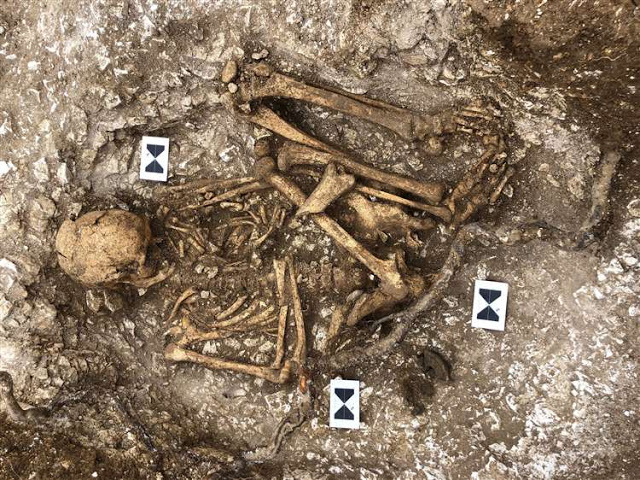Human Remains Unearthed At Site Of Early Roman Military Base In Kent
Archeologists working on a building site have discovered two skeletons dating back to the Bronze and Iron Ages.
The skeletons were found during the construction of the Aylesham Garden Village near Canterbury and now researchers at the University of Kent are studying them and discovering why they were hidden in the building
These are some of the most recent archeological discoveries on the site, including smaller pieces of pottery and glass dating back 2,000 years to the Roman period.

The dig is being undertaken for developers Barratt Homes and Persimmon Homes by a team from the Faversham-based Swale and Thames Archaeology (SWAT).
SWAT’s Dr. Paul Wilkinson said: “It will be some time before we know much more about the skeletons and their graves. However, the other items we have found have helped to fill in some big gaps in our knowledge of post-invasion Roman life.

“We are quite certain we have discovered what was a military supply depot on the Aylesham site. This would have been set up a year or two after the Romans invaded Britain and we believe would have been manned by soldiers of a Roman legion.
“Not all of them would have been fighting men but specialists in a range of support roles – similar to the British Army of the Victorian era – and would have been posted around an area to concentrate on infrastructure tasks.
“At the center of the Aylesham site were three kilns for firing pottery which was bordered by trenches and ditches.
Local clay would have been used to make the army’s pots, plates, and urns. We have found glass items from Gaul, now France, and other pottery from Germany in Aylesham as well.
“We have discovered some of the urns found in Aylesham were made in the Medway area and these, with local-made items found, suggest the Romans were mass-producing everyday items quickly and efficiently.

“The site sits on the high ground offering sweeping views of the countryside in a triangle with Canterbury and the Roman ports of Richborough and Dover. It isn’t far from the strategically important Roman Watling Street connecting Dover and Richborough to Canterbury and beyond to Roman London.”
Future plans for the archaeological team center around digging on a site to the east of Aylesham railway station, a short distance from the development.
It is hoped a selection of the Aylesham finds can be eventually put on display.
